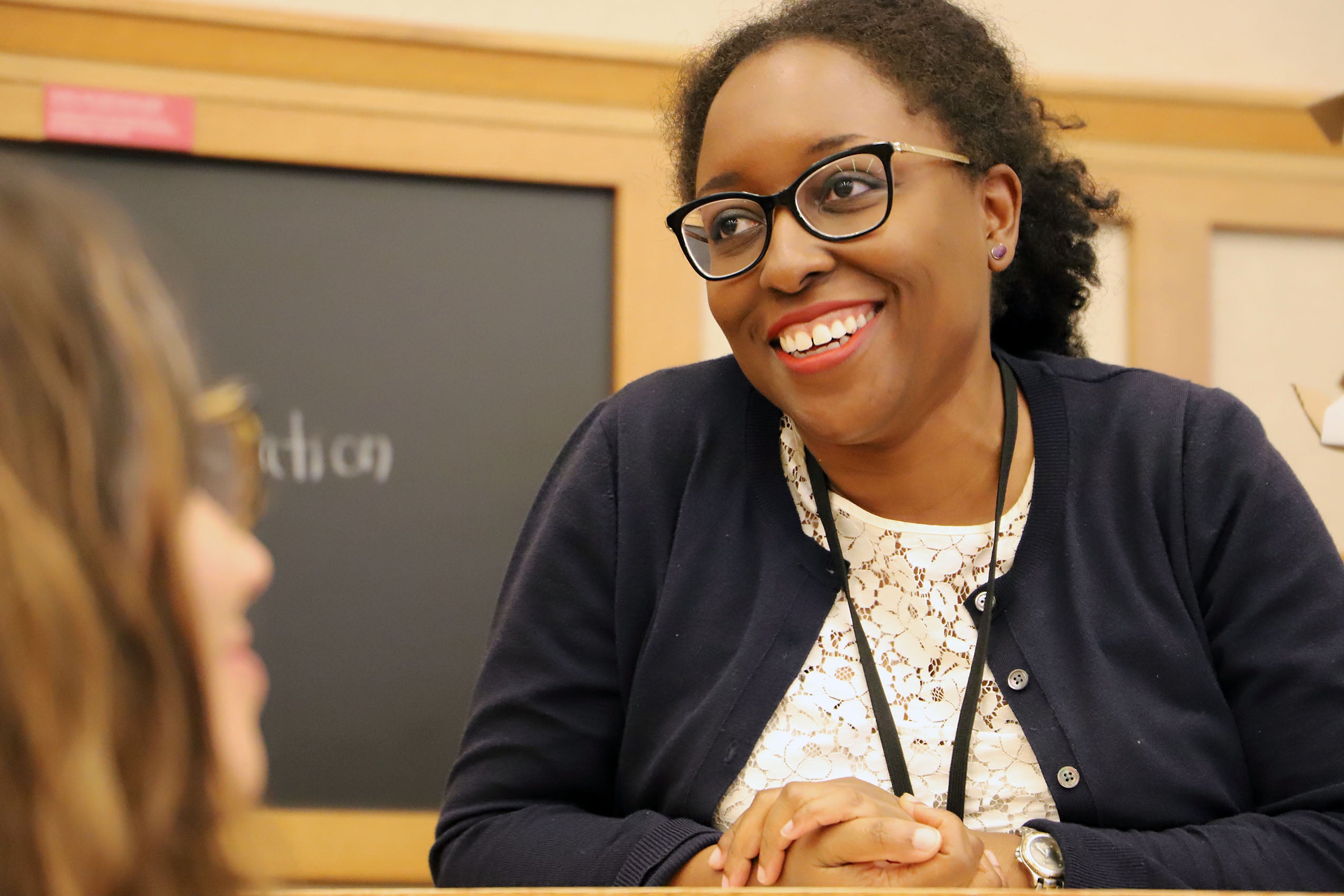The Human Rights Program at Harvard Law School is organizing a series of virtual events on racial justice and human rights, during the 2020–2021 academic year. Convened by Aminta Ossom ’09, clinical instructor in the International Human Rights Clinic, the series aims to foster dialogue between students, scholars, and practitioners on the role that race plays both in the practice and substance of international human rights work.
The first event, “Advocating While Black: Navigating Black Identity in the Human Rights Field,” will take place on Thursday, Sept. 24 at 12 pm. Register on Zoom here.
HRP spoke with Ossom about the series and what she hopes to unpack throughout the year.

Human Rights Program: What inspired you to convene this event series? What do you hope to explore?
Aminta Ossom: The series is inspired most directly by the ongoing discussions about systemic racism that have accompanied protests for racial justice around the world. These discussions have naturally led to reflections about how to improve equality in our profession, not only by looking critically at the type of work that we do—including the projects and partnerships we take on—but also at the way we do our work. Of course, I am also motivated by the way practice and scholarship can reinforce each other. Debates on the origins of the law, the function of the law, and ways to bring law and justice closer together can be directly applied to human rights practice. At the same time, observations about human rights practice can spark ideas that lead to great legal scholarship. I hope these conversations facilitate fruitful exchanges in this regard.
HRP: As a human rights advocate, have you done much introspective work about the human rights movement? In your opinion, why is it important to think introspectively about the movement?
Ossom: I have had a longstanding interest in the way our identities impact our advocacy—and then, on a larger scale, how that advocacy affects the substance of international human rights law in particular. International human rights is a field that, by its very definition, is multi-cultural, so questions about positionality and how to bridge cultural divides often present themselves. In recent years, human rights clinicians have also been at the forefront of research that looks inward, exploring how we maintain resilience and define success in our field. This includes Professor Susan Farbstein’s work examining barriers women face rising into leadership positions in the human rights movement and the work of our colleagues at Columbia and NYU focused on the mental health and well-being of human rights workers. This series is informed by that work, and I hope it complements those initiatives. Register for “Advocating While Black”
Advocating while black: Navigating black identity in the human rights field
Aspects of human rights work may present particular challenges and opportunities for practitioners of color. Human rights advocates work cross-culturally and undertake work that often requires international travel or relocation abroad. Panelists will interrogate the status quo at a time when practitioners are questioning whether structures designed to promote justice could themselves contribute to systemic racism and inequality in society. “Advocating While Black” is the first in an event series focused on racial justice and human rights. The inaugural event, organized by the Human Rights Program at Harvard Law School and co-sponsored by the Harvard African Law Association, HLS Advocates for Human Rights, and the Charles Hamilton Houston Institute for Race & Justice, will take place on September 24 @ 12:00 pm – 1:00 pm
HRP: How will the first event on September 24 set the stage for the events that follow?
Ossom: The first event is focused on the experiences of Black human rights advocates. It aims to identify aspects of international advocacy that present particular opportunities or challenges for practitioners who define themselves as Black or of African descent. Some characteristics of the work, which seem benign on their face, can be experienced differently by Black advocates. For example, living and traveling abroad can be isolating or even dangerous when done in a Black body. The expectations of witnesses you are interviewing or communities with whom you are interacting may be different according to how you are perceived. At the same time, advocates can also draw on their own lived experiences for a sense of purpose and to build trust when working with others who share similar experiences and goals. You can learn more about the slate of speakers on the HRP event page.
HRP: How will future events contribute to the conversation?
Ossom: We foresee future events drawing from the rich and diverse perspectives of alumni and colleagues in the human rights field. For example, we hope to reflect on movements for racial justice in other countries, examining what has sustained them, the types of advocacy strategies that have been effective, and the role that lawyers have played in those efforts. I also believe there are unique lessons we can learn from human rights lawyers who advocate in both domestic and international forums to push for racial justice.
HRP: What do you hope students take away from these conversations? Where do you see these dialogues leading?
Ossom: The series seeks to highlight the different tools and approaches human rights advocates employ to push for racial justice and equality in our societies. It also illustrates that human rights advocates are not all the same. International human rights work involves a lot of collaboration and solidarity, which necessitates self-reflection, understanding and humility. At the same time, the multifaceted nature of the work provides opportunities for each of us to bring our own skills and backgrounds to bear. I hope that, by understanding that the human rights field is not a monolith, students will have a grounded, practical understanding of the work and also see a place for themselves in the field.
